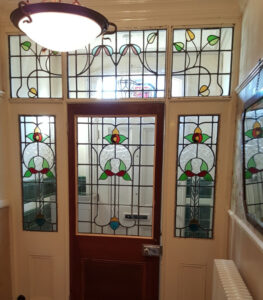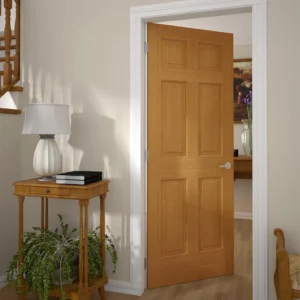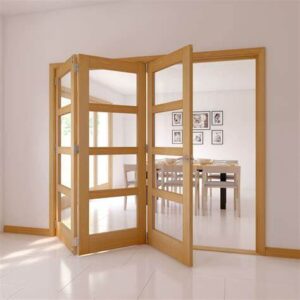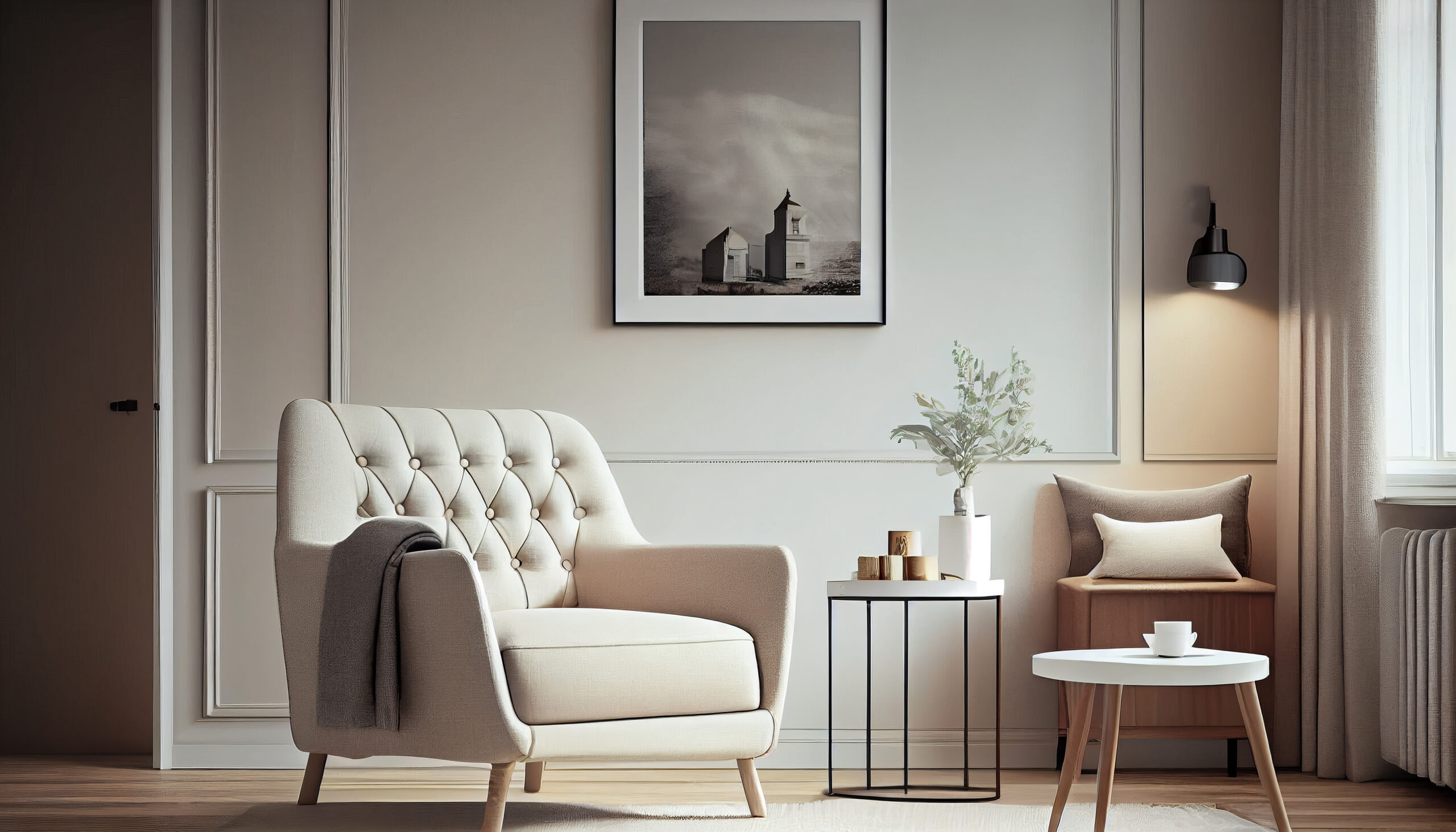Doors, though often overlooked, are an essential component of architecture and interior design. They serve as gateways, defining boundaries while also embodying aesthetic and functional elements. From ancient times to modern-day structures, doors have evolved significantly, reflecting changes in culture, technology, and design preferences.
A Brief History:
The history of doors traces back to ancient civilizations such as Mesopotamia and Egypt. Initially, doors were crafted from rudimentary materials like wood and stone, serving primarily as barriers for protection and privacy. As civilizations advanced, so did door designs, incorporating intricate carvings, symbolic motifs, and architectural embellishments.
During the Renaissance period, doors became grandiose expressions of wealth and status, adorned with ornate decorations and crafted by skilled artisans. Industrialization brought about mass production, enabling doors to be more accessible and affordable to the masses. With the advent of modern architecture, doors have evolved to encompass a myriad of styles, materials, and functionalities.
The Styles and Types of Doors:
When discussing doors, it’s crucial to distinguish between style and type. The style refers to the aesthetic characteristics, encompassing design elements such as shape, embellishments, and finishes. On the other hand, the type denotes the functionality and operation of the door, including how it swings, slides, or folds.
Styles of Doors:

Traditional: Characterized by classic designs, often featuring raised panels and decorative mouldings.

Contemporary: Clean lines and minimalist aesthetics define contemporary doors, often made of sleek materials like glass and metal.

French: Elegant and timeless, French doors typically consist of multiple glass panels framed by wood or metal.

Barn: Inspired by rustic farm buildings, barn doors slide along tracks, adding a touch of country charm to interiors.

Craftsman: Reflecting the Arts and Crafts movement, Craftsman doors feature simple, geometric designs and natural materials.

Victorian: Ornate and elaborate, Victorian doors are adorned with intricate carvings, stained glass, and decorative hardware.

Shaker: Known for their simplicity and functionality, Shaker doors feature flat panels and clean lines, emphasizing craftsmanship.

Art Deco: Art Deco doors exude glamour and sophistication, incorporating geometric patterns, chrome accents, and luxurious materials.

Colonial: Reminiscent of early American architecture, Colonial doors are characterized by symmetrical designs and traditional detailing.

Modern Rustic: Combining modern aesthetics with rustic elements, these doors often feature reclaimed wood and industrial hardware.
Types of Doors:

Swinging: Also known as hinged doors, swinging doors operate on hinges attached to a door frame, swinging open or closed.

Sliding: Sliding doors glide horizontally along tracks, ideal for spaces with limited room for swinging.

Folding: Folding doors consist of multiple panels that fold accordion-style, creating wide openings and maximizing space.

Pocket: Pocket doors slide into a recess within the wall, effectively concealing them when opened.

Bypass: Bypass doors slide past each other, commonly used for closets and storage areas.

Dutch: Dutch doors are divided horizontally, allowing the top and bottom halves to open independently, offering versatility and functionality.

Bi-fold: Bi-fold doors fold in half vertically, commonly used for closets, laundry rooms, and pantries.

Pivot: Pivot doors rotate on a pivot hinge, offering a unique and dramatic entryway.

Flush: Flush doors have smooth, flat surfaces without raised panels or decorative elements, creating a seamless look.
Materials:
Doors can be crafted from various materials, each offering distinct advantages in terms of durability, aesthetics, and maintenance:
Wood: Timeless and versatile, wood doors exude warmth and natural beauty, though they may require periodic maintenance.
Metal: Metal doors are highly durable and resistant to warping, making them ideal for high-traffic areas and exterior applications.
Glass: Glass doors allow natural light to flow between spaces, creating an open and airy atmosphere, though privacy may be a concern.
Fiberglass: Fiberglass doors mimic the look of wood while offering superior durability and resistance to elements such as moisture and pests.
Composite: Composite doors combine various materials such as wood fibres and resins, offering the benefits of both wood and fiberglass.
Steel: Steel doors provide unmatched security and durability, making them popular choices for exterior entryways.
Aluminium: Lightweight and corrosion-resistant, aluminium doors are commonly used for commercial applications and modern designs.
Dos and Don’ts When Purchasing Doors:
Do:
- Measure the opening accurately to ensure a proper fit.
- Consider the architectural style and design aesthetic of your home.
- Invest in quality materials and craftsmanship for long-term durability.
- Take into account the functionality and traffic flow of the space.
- Research reputable manufacturers and suppliers for reliable products.
Don’t:
- Sacrifice quality for price; cheap doors may require frequent replacements and repairs.
- Overlook the importance of proper installation; poorly installed doors can affect performance and energy efficiency.
- Neglect maintenance; regular cleaning and upkeep can prolong the lifespan of your doors.
- Forget to consider security features, especially for exterior doors.
- Ignore building codes and regulations regarding fire safety, accessibility, and egress requirements.
Doors are more than just practical barriers; they are expressions of style, functionality, and craftsmanship. By understanding the various styles, types, and materials available, homeowners and designers can select doors that not only enhance the aesthetics of a space but also meet their practical needs and lifestyle preferences. Whether classic and timeless or sleek and modern, the right door can elevate the overall design and functionality of any interior or exterior space.





That is a great tip especially to tthose fresh to tthe
blogosphere. Brief but very precise info? Thank you
for sharing this one. A must read article!
My site: https://saveorgrieve.com/services-and-tips-find-out-a-good-plumber/
I am glad you enjoyed the article and found it helpful, the aim of my articles are to inform without to much jargon and to be brief so people don’t get board reading them. I also try to inspire people to try new things or decorate in a different way.